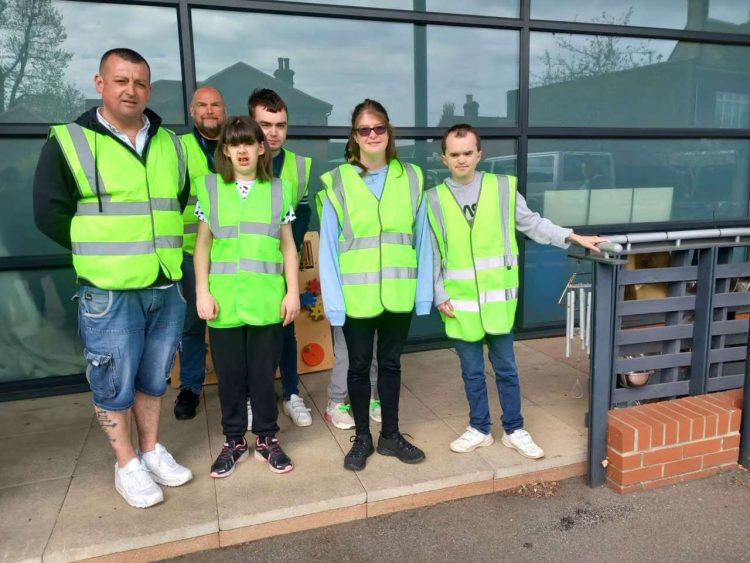A new report has revealed that community rail plays a leading role in enabling accessible and inclusive journeys.
The work of the seventy-six community rail partnerships (CRPs) and twelve hundred station groups that make up the community rail movement opens up rail travel and stations to people with a wide range of physical and non-visible impairments and other support needs.
The report, ‘Community rail and inclusive, accessible travel’, has been produced by the Community Rail Network with support from the Rail Delivery Group (RDG). It shows that projects are increasing people’s confidence to travel, including among autistic people and people with dementia and mental health problems. Community rail’s work promotes independent living and improves social mobility, which can have life-changing effects.
Community rail partnerships (CRPs) and groups also help to make stations physically accessible, with a more inclusive and welcoming environments, and coordinate inclusive volunteering.
A key factor is community rail’s local knowledge and relationships with other community groups. The report found that this is vital in enduring the success of measures designed to improve accessibility and inclusion.
In line with the longstanding slogan of the disabled people’s movement, ‘Nothing About Us Without Us’, the report finds that an initiative will be more effective if it is genuinely shaped by the people it aims to benefit, brings people together and takes an inclusive pan-disability approach.

The report urges railway organisations, policy makers and strategic planners to understand community rail’s accessibility and inclusion work and respond to the insights these projects offer.
Examples cited in the report include:
- Hampshire CRP and Winchester Go LD’s ‘Travel with Confidence’ project, in which adults with learning disabilities provide travel training and mentoring to groups of their peers;
- Community Rail Lancashire’s work opening up rail travel to autistic people, using virtual reality, interactive videos, guided adventures and station audits;
- The work of the Leeds-Morecambe CRP and Friends of Buxton Station in creating dementia-friendly rail journeys and station environments;
- Essex and South Suffolk CRP’s initiatives offering supported, inclusive, sociable rail journeys for refugees and asylum seekers;
- Tyne Valley CRP’s ‘Lyric and Line project, which uses songwriting and music to explore barriers to rail travel for groups with additional support needs.
The community rail movement aims to help people become more confident to travel. It also aims to promote sustainable and healthy travel, improve access to opportunity, tackle social isolation, and put railways and stations at the heart of community life.

The report’s authors believe that the projects that it showcases complement the aims of the Government’s Inclusive Transport Strategy and the approach being taken by Great British Railways, which is due to publish a new National Railway Accessibility Strategy before the end of this year.

Jools Townsend, chief executive of Community Rail Network, said: “Our railways, and public transport as a whole, need to become more inclusive, accessible, and responsive to local needs if we are to achieve a greener, healthier, fairer transport future – partnership working within local communities is vital to this. Our growing evidence base, including this report, shows the myriad of ways that community rail provides a vehicle for this, empowering communities and benefiting people’s lives though grassroots projects, supported by the rail industry.
“Putting accessibility and inclusion at the forefront of rail industry thinking, and supporting this through the local engagement typified by community rail, will ensure our railways play a growing, enabling role at the heart of our communities into the future, enabling more people to travel sustainably by train and access the opportunities they want.”
Jacqueline Starr, chief executive officer of the Rail Delivery Group, said: “We believe that rail should be accessible and inclusive. The railway provides a vital service, and this latest report shows that working with community rail is invaluable when implementing new initiatives on accessibility and inclusion successfully. It includes examples of what can be achieved by working collaboratively with community networks.
“We remain committed to ensuring that all our customers have equal opportunities to travel comfortably and independently.”
The report can be accessed via the Community Rail Network website.





Responses